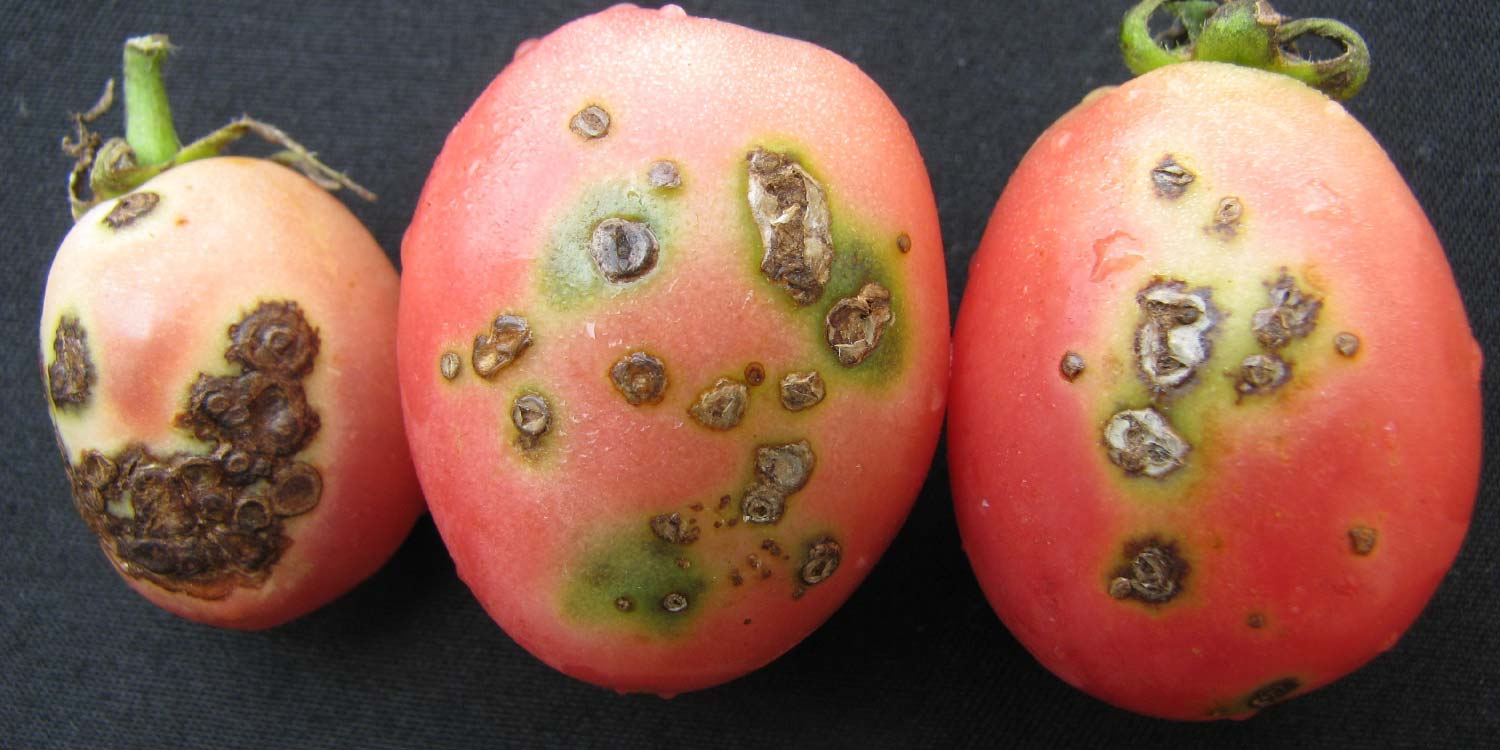Bacterial spot disease is caused by the bacterium Xanthomonas campestris pv, vesicatoria. It is a severe disease of tomatoes and capsicum which causes significant losses.
The disease can affect all aboveground parts of the plant, i.e. stems, petioles, leaves, and fruits. Spotting on fruits commonly result in unmarketable fruit, not only for fresh market but also for processing.
Disease cycle
The disease is favoured by long periods of high relative humidity with free moisture on the leaves. When inoculated plants are exposed to high relative humidity for a few hours during several days, the pathogen can produce disease symptoms.
The bacteria are spread from plant to plant by splashing rain and by touching and handling wet plants and enter the leaf through stomata and wounds.
Important sources for bacterial spot are infested seed and diseased transplants.
Once initial infections take place, it can spread rapidly throughout the entire field during rainy weather from a few infected plants.
Symptoms
Distinct symptoms occur on pepper and tomato fruit, leaves, and seedlings and on pepper stems. Young leaves and fruit are more susceptible than older tissues.
Infected leaves show small, irregular, dark lesions which can coalesce and cause the leaves to develop a general yellowing. Symptoms appear first on the undersides of leaves as small water-soaked areas while on the upper leaf surface the spots are depressed with a brown border around a beige center. Heavy infections cause the leaves to yellow and drop off, increasing the chance for sunscald
Flower infection with bacterial spot can be quite serious with pedicel infection causing early blossom drop.
On green fruits, small water-soaked spots are first noticed. These spots become slightly raised and enlarge. The center becomes irregular, brown, and slightly sunken, with a rough, scabby surface. Although ripe fruit are not susceptible, lesions are very obvious if fruits were infected when green.
Disease Management
Chemical control
For an effective control of the disease, copper-based fungicides are recommended.
These include the following
Non-chemical methods
- Use disease-free or certified planting materials.
- Destroy old capsicum plants immediately after final harvest.
- Do not allow volunteer capsicum or tomato plants to grow between seasons or amongst cover crops, because they can harbour the disease.
- Control solanaceous weeds such as nightshades in and around the crop.
- Do not rotate or grow capsicum crops with tomato, potato or eggplant.
- Physically separate successive plantings. When space is limiting, successive plantings in the same field can be separated by planting several rows of a plant that will form a tall, thick barrier, such as sorghum or Sudan grass.
- Provide appropriate amounts of fertilizer and water because plants that are stressed or those that are growing too luxuriantly can be more susceptible to disease.
- Use drip rather than overhead irrigation. Water splashed during overhead irrigation spreads the pathogen. When overhead irrigation is the only option, water during the day with enough time to ensure that the plants are dry by nightfall.
- Monitor crops thoroughly for bacterial spot and other diseases regularly.
- Avoid working fields when plants are wet. As well as movement by splashing water drops, the pathogen can be spread mechanically on workers’ hands and on farm machinery when plants are wet. Work in infested areas last if possible.
- Disinfect spray rigs and other machinery with a general disinfectant product after the job is completed or before using the equipment in uninfected crops.
Note;
- A proper nutrition increases plant’s resistance to infections.
- The fungicides should be mixed with INTEGRA 3ml/20l. It is a sticker, spreader and penetrant which increases the efficacy of the fungicide for an effective control.
- Timely disease management/control is very critical.






